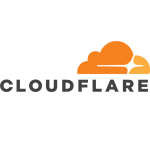What is our primary use case?
The purpose of the solution is connected to the fact that we use the whole Microsoft suite. We use the DLP mostly, but we also use Defender which comes with the Microsoft license.
Up until now, we have used it to investigate everything, what's going on and whether people are sharing data, but mainly for monitoring. There are just a few things that are being blocked right now.
How has it helped my organization?
Purview has helped significantly to reduce the number of solutions we need to interact with each other. It's one suite for everything, which is very good.
We can also see compliance in real time. There's great visibility into data governance. That's one of the strongest points. We have 100 percent compliance with legal regulations around the globe. That's very good. It has notably improved our ability to stay on top of compliance. It's not all companies that are 100 percent compliant.
In addition, the time needed to respond to insider threats has decreased. It's very easy to know everything that's going on right now. I have all the controls to see what's being shared everywhere, around the world. If we see something that looks odd, we reach out to the folks involved immediately. It's almost instant. It has reduced our insider threat response time by more than 60 percent.
What is most valuable?
It is
- very easy to use
- very easy to learn
- very well documented
and the community is great as well.
The UX is very good. It's easy to get around inside that tool, and it's easy to get help.
I don't think it's very different from other solutions regarding the features, but because everything is on Microsoft and we use Azure, integration with the product is easier. That's the most important thing when you use many Microsoft products. It's easier to integrate everything in one place.
It's very important that it collects data from non-Microsoft products if we need information about what's going on with other OSs. If we're talking about personal computers, especially employees' computers, they are mostly going to be Windows. But if we're talking about servers, they are mostly Linux.
Purview is also built to take into account regulations from the US, Brazil, Europe, Asia-Pacific, et cetera. This is very important as well because you have to take into account the intricacies of each legal system.
Another good feature is the education it provides to users on how best to handle sensitive data.
What needs improvement?
There is no AIP for Linux systems. That's a setback. Another thing it's lacking is libraries to work with Python. It has libraries for C# and C++, for example, but not for Python and, these days, Python is very useful.
Power Automate can be improved as well. You can do plenty of things with it but it still doesn't do everything that you have in a full development language. It doesn't have that flexibility.
I would also like more integrations in Power Automate. Because so many things are a premium with Power Automate, you cannot do everything. There are a bunch of integrations that you have to pay more to use. That's not very good.
For how long have I used the solution?
I have been using Microsoft Purview Data Loss Prevention for one year and three months.
What do I think about the stability of the solution?
So far, we have not had an outage. It seems like a 99.9 SLA.
What do I think about the scalability of the solution?
It's a SaaS solution, so everything is in the cloud in one place. It's scalable if you're all Microsoft, but if you have Linux, I wouldn't say it's that scalable. You might have to do some work.
We have about 70,000 users. It's a global solution for everyone in our organization.
How are customer service and support?
I have never used the technical support of Microsoft. But the documentation is good, very clear, very easy to use, and in one spot. We find whatever we are looking for.
Which solution did I use previously and why did I switch?
For DLP, I used Symantec in another organization. In this organization, we used to use McAfee DLP. We switched mainly because of the price. Microsoft provides a bunch of tools for a fixed price, so there are other features that come with that suite of tools.
What was our ROI?
I believe we have seen return on investment because new engineers know their way around very fast. When I joined the company, it took me just one month to make my way around everything. It's easy to get our hands dirty and start working.
What's my experience with pricing, setup cost, and licensing?
Despite some setbacks regarding the premium features for automating and integrating in Power Apps—you can only use the handiest stuff if you pay a premium price—there are many good things that come with the license that we already have. There is training as well; we can attend as much training as we want. They also provide good support. Overall, the pricing is okay.
What other advice do I have?
The fact that Purview works across multi-cloud and multi-platform environments, is important, in spite of the fact that we mainly use Microsoft and Azure cloud. It's good if we plan, in the future, to move to another cloud service. Also, it's good that Purview can connect to iOS, Mac, and Android devices. The more tools we can integrate the better, because it enables us to scale very fast, even though right now we don't use it on iOS and those other systems.
Purview is still very new for us, even after one year. We're still looking into how things can be done. We're a global company and there are many policies and many different laws across the globe. Sometimes we can't do everything we could theoretically do with the tool. It's a powerful tool but we are still discussing legal matters across the globe.
Regarding maintenance of Purview, we just check if it's up to date and what updates Microsoft has provided. But we don't have to do too much.
I started working with this tool one year ago and I'm really impressed with its capabilities. I have worked in other banks and we had to use so many things to get one thing done, so I have a positive impression of Purview. I would definitely recommend trying it.
Disclosure: My company does not have a business relationship with this vendor other than being a customer.













